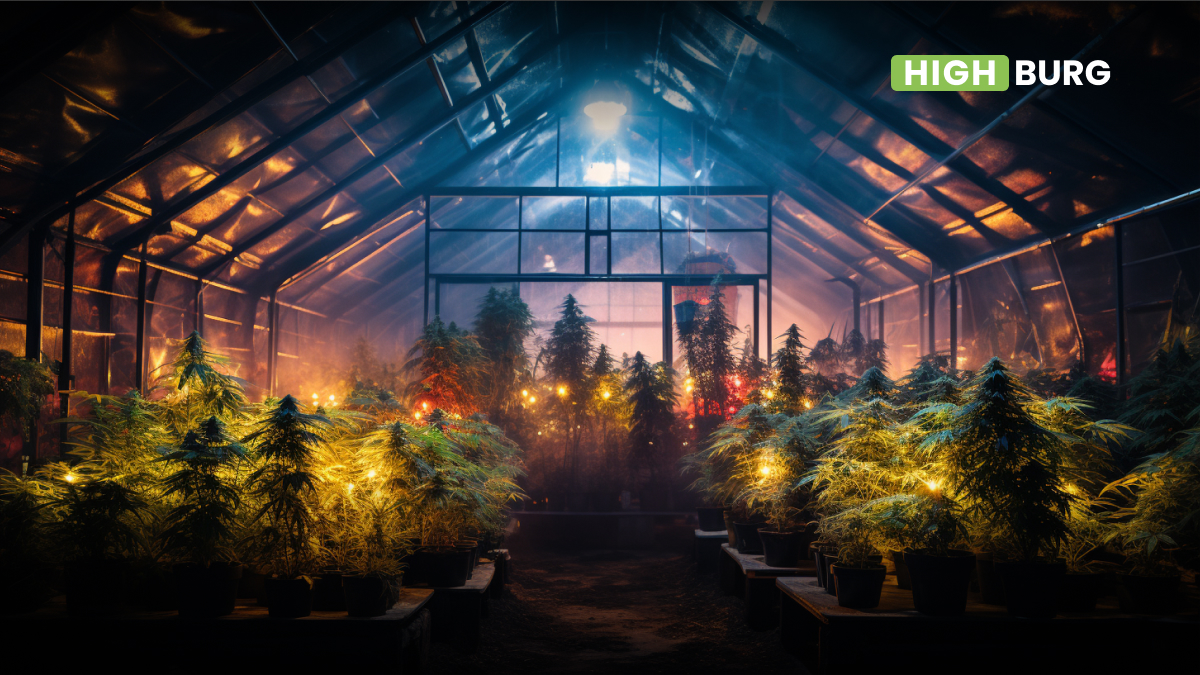Otherwise known as a “walipini” or “pit greenhouse,” an underground greenhouse is exactly what it sounds like: a greenhouse dug under the ground. Only the roof is constructed above the surface, with all four walls submerged beneath.
The history of underground greenhouses began in Bolivia a couple of decades ago as a means to ensure food security. These structures give farmers much more control over crops from extreme weather conditions and temperatures.
The temperature of soil just under the surface of the ground typically maintains consistent temperatures throughout the year, no matter the season or location. [1] Underground soil also does not experience the same level of temperature fluctuation as the air above, which gives growers the benefit of consistency in terms of heating their greenhouses, particularly during the colder months of the year.
Why Build a Greenhouse Underground?
There are a handful of reasons why cannabis growers may consider an underground greenhouse for their crops:
Protect against fluctuating outdoor temperatures
The temperature of the ground can be significantly different from the air above. The further you dig down, the more the temperature can change. Further, an underground environment is fully protected from the outside elements, including a change in temperature.
Those who live in colder climates may experience frost, which can pose a problem for outdoor crops, including those in greenhouses. With an underground greenhouse, growers can take advantage of thermal mass, which can help minimize temperature fluctuations throughout the day and keep the greenhouse warm without losing valuable heat.
Whether you reside in a warmer southern climate or further north where frost is typical, an underground greenhouse still works. Again, the temperature of the ground beneath and the protection from the above-ground temperatures makes underground greenhouses ideal just about anywhere.
Less visible
Traditional greenhouses are typically large structures that can take up quite a bit of visual space. Building a greenhouse underground keeps it hidden from sight, which some growers may prefer over above-ground structures that tend to overpower an outdoor space.
Considerations When Building an Underground Cannabis Greenhouse
Before constructing an underground greenhouse to grow cannabis, several considerations should be made:
Entrance
An above-ground entrance is easy enough to build, but constructing one to provide access to an underground greenhouse can be problematic. A smart entrance design is warranted that allows for easy access without being so deep that it can make it difficult to drain pooled water following significant precipitation.
Roofing
Since an underground greenhouse is built under the earth’s surface, the roof is essentially the main point of construction that requires the most attention. Generally speaking, glazing is the main type of material used to cover the roof (as well as the frame for above-ground greenhouses) and incorporates a glass or plastic roof.
It’s important that the glazing material used features a high insulation value and light transmittance, since this is where the majority of any heat loss will occur. Commonly-used glazing options include poly sheets or polycarbonate panels. Regardless of the exact type of glazing used, it should be constructed with a certain level of sloping to ensure effective surface run-off.
To avoid any excess shading, a steeper slope may be warranted on the northern side of the underground greenhouse.
Insulation
Underground greenhouses come with built-in insulation thanks to the surrounding soil walls. Having said that, it may not necessarily be effective enough to provide ample insulation.
Further, underground walls are not reinforced, which can potentially lead to the walls giving way to some degree. As such, the addition of insulation materials is often required.
Ventilation in Your Underground Greenhouse
Proper ventilation is crucial to remove excess heat and moisture, ensure a fresh source of carbon dioxide, and circulate air within the space. Ventilating an underground greenhouse can be a bit complicated because of the physical location of the structure. In this case, ventilating can involve a vent installed at the top of one of the walls or a trap door vent on the roof.
Drain System
Water can seep into a greenhouse environment, which can wreak havoc on the structure’s integrity. A drain system may be needed to avoid an abundance of water pooling in the greenhouse and creating a muddy environment.
Anyone looking to build an underground greenhouse to grow their cannabis plants should consider some of the differences compared to traditional greenhouses, as well as the perks and drawbacks of this option compared to more conventional structures.
References:
1. Márquez, J.M.A., et al, “Ground Thermal Diffusivity Calculation by Direct Soil Temperature Measurement. Application to very Low Enthalpy Geothermal Energy Systems“, Sensors (Basel), March 2016; 16(3): 306. Times Cited: 105; Journal Impact Factor: 3.576.
